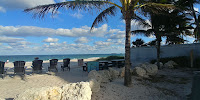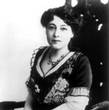 |
| Florida State Archives |
Holatta-Micco, as he was known to his people, assumed leadership of the Seminoles after other chiefs lost power or died. At the end of the Second Seminole War, the U.S. government informally agreed with Chief Billy Bowlegs that his people stay south of the Peace River (south of Charlotte Harbor in west Florida) and maintain harmony with white settlers.
It was a tough agreement to follow, especially when it seems the government was intent on moving Florida’s Seminoles to Oklahoma and Arkansas. Seminoles were blamed for murders of settlers in the years following the end of the war. Negotiations to remove the Indians continued.
One attempt at persuading the Seminoles included a trip to Washington to carry on discussions. “Mr. William B. Legs,” as the chief was registered in hotels along the way, ordered and was given, a pair of pants, a pair of half-sewed boots, one handkerchief, six bottles of French brandy, six bottles claret and one tumbler. Discussions were for naught; Chief Billy Bowlegs disappeared into the Everglades upon his return.
In 1858, baffled by the “energetic efforts of our army to effect their subjugation and removal,” Secretary of War Jefferson Davis approved payment to the Seminoles. Bowlegs was offered $6,500, four lesser chiefs $1,000, warriors $500 a piece and women and children $100 each. About 160 Seminoles set sail for New Orleans on their way to be resettled in the west. One warrior committed suicide on the trip.
The money Bowlegs and his people received is probably basis for a myth that he left treasure - piles of coin and jewels – near Santa Rosa Sound. Myth also claims Bowlegs set himself up with a harem and declared himself king of Florida in 1810. What is known is that he died not long after resettlement, perhaps 1858, chief of his exiled people.
Bowlegs and his band of 160 were not the last of the Seminoles. About 200 remained, deep in the recesses of the Everglades. The Seminoles, today a Federally Recognized Indian Tribe, never signed a peace treaty, the only tribe never to do so.
Who are the Seminoles' heroes? Among them are Seminoles Sam Jones, who never left Florida, and warrior Osceola, who was captured and sent to South Carolina (d. 1838).
____________
Sources:
Douglas, Marjory Stoneman. The Everglades: River of Grass. Miami: Banyan Books, 1978.
Miami News, Jan. 12, 1923
Palm Beach Post, April 14, 1946
The Seminole Tribe: http://www.semtribe.com
Tags: Florida history, Jane Feehan film researcher, Seminole history, Seminole Wars









